Hello everypony.
 Its time for another tutorial with your second favorite mod,
Its time for another tutorial with your second favorite mod, v-vi--viw---viwrspartarasrtgftssakjhlgasjj....
v-vi--viw---viwrspartarasrtgftssakjhlgasjj.... ah, screw it.
ah, screw it.I'm here to teach you some stuff about how ponies are put together in the show. Or, at least the basics.
Ponies are put together with an undersketch. What's an undersketch? Well, they look like this:
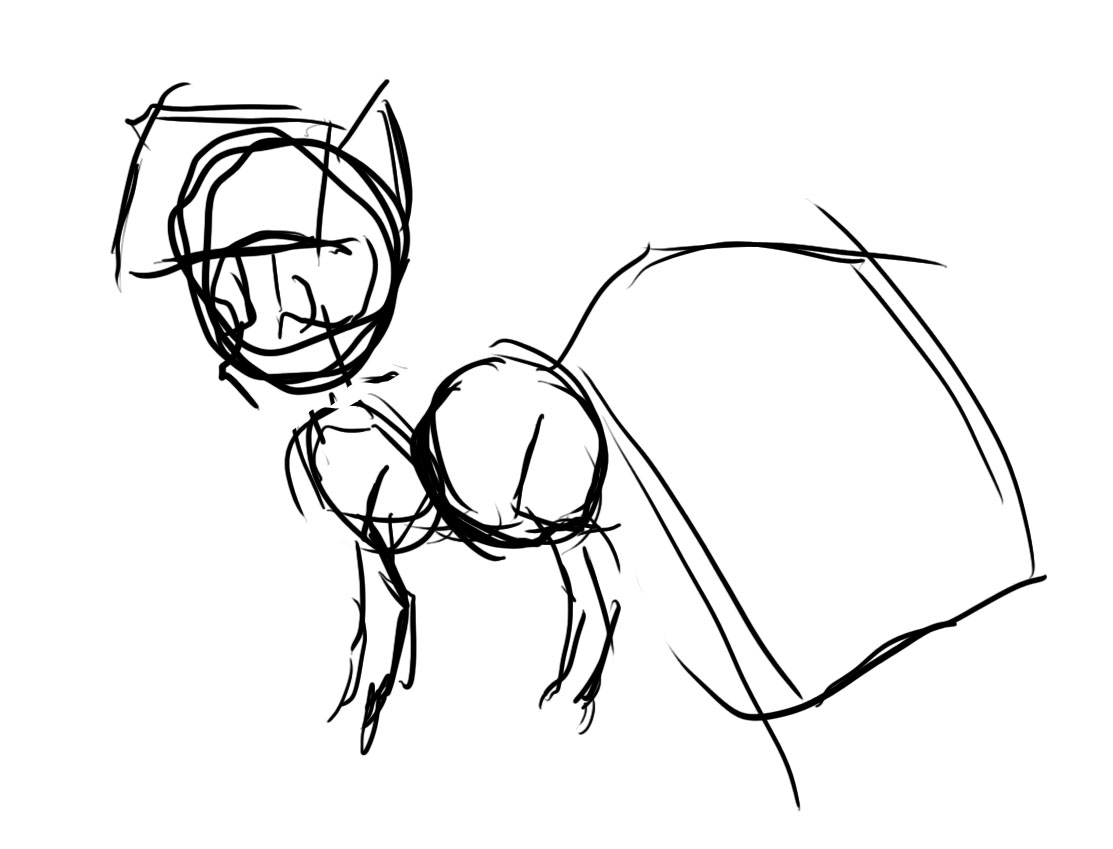
It looks like crap, doesn't it? Well it's supposed to, it isn't the final piece. You see, what an undersketch does is provide the foundation on which the rest of the pony's body, placement, angles, proportions, and everything really depends on.
Now let's take a closer look at that undersketch. A pony body is made up of two intersecting circles. A larger one for the rump and a smaller one for the chest. Now what about the limbs, where do those lines come from? I link to this guide a lot and the limbs are why:
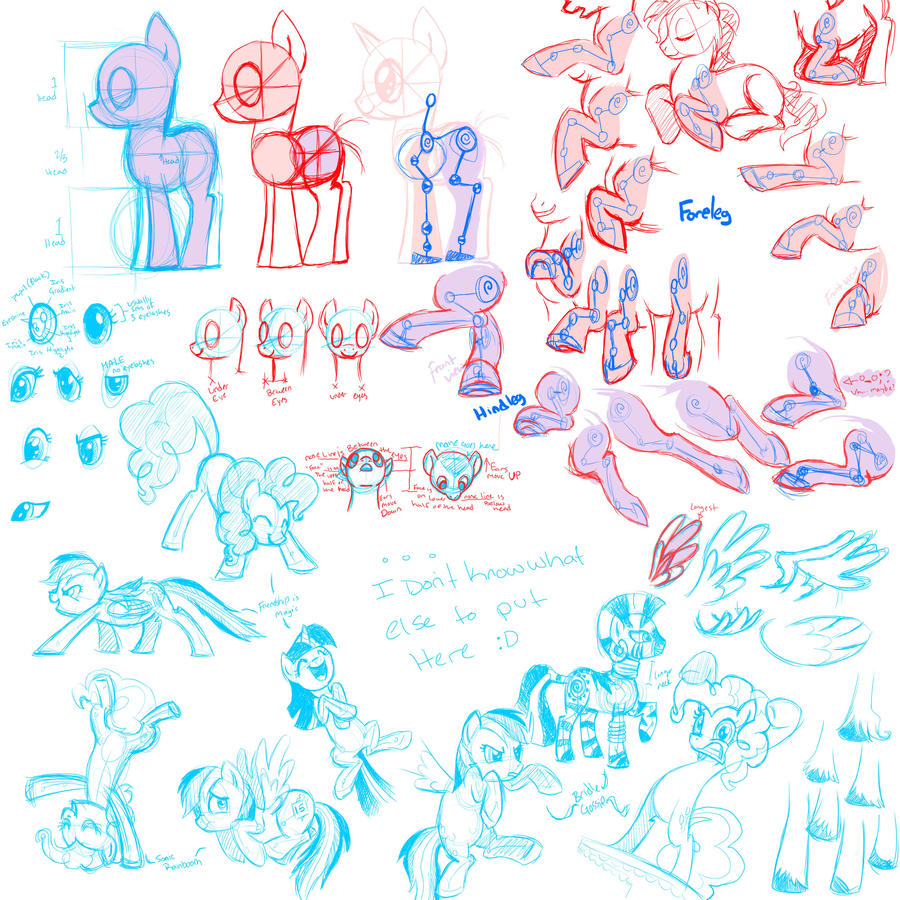
Each line represents a pony's bone and where they change direction, a joint. By placing these lines in first, you can figure out the placement and proportions of the legs and their joints.
By doing these simple few lines and circles, you let yourself be able to draw and recorrect, draw and recorrect until its in the right spot and at the right place.
 Correct, recorrect... got it. But how?
Correct, recorrect... got it. But how?Let's take the back legs for instance. They have an angle that is difficult for most to see on their first few pony arts. Look at the angle the back line of the back leg is making in these pictures:
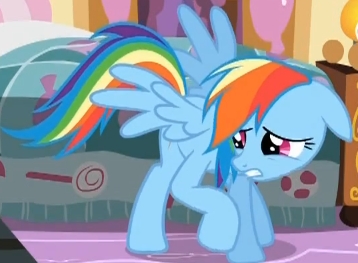
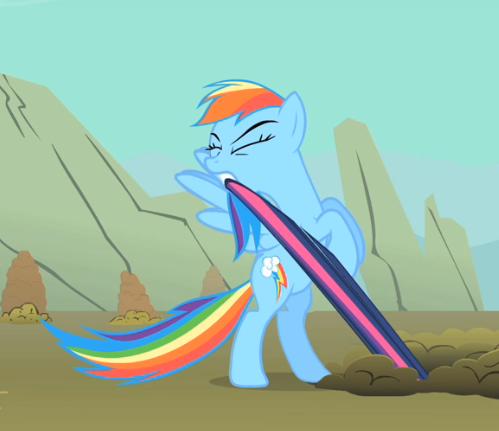
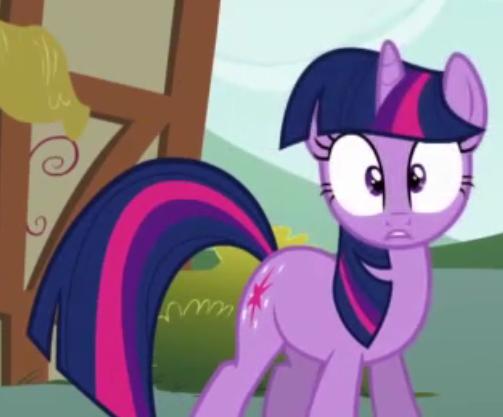
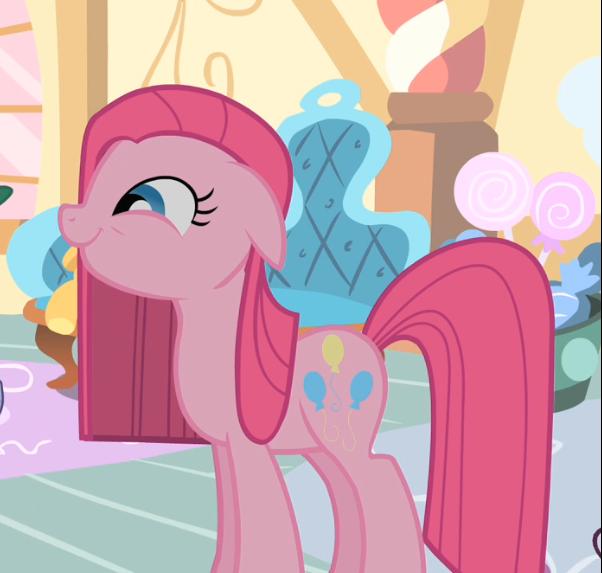
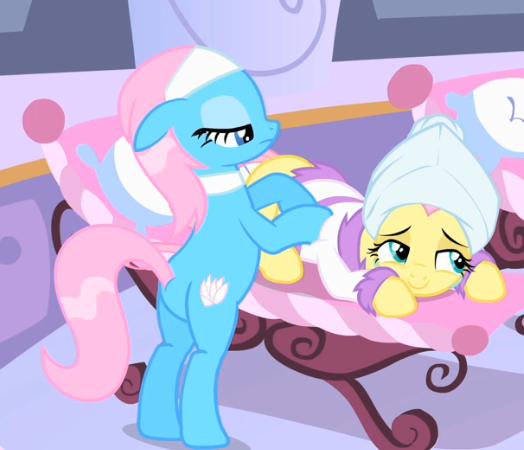
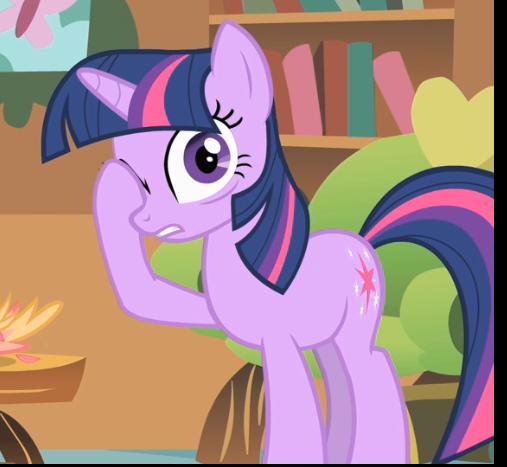
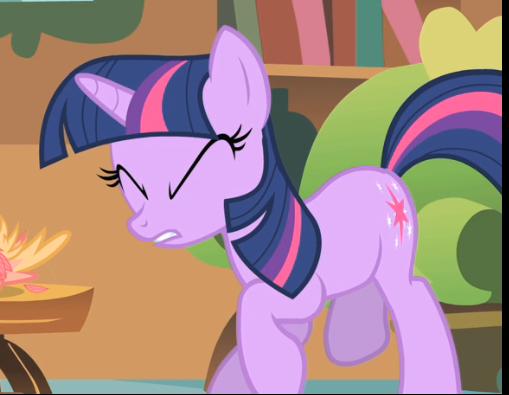
It comes out. Not in. Out. In all flatfooted situations in the show this is the case. Back legs are neither straight nor forward, they come out, away from the body.--- This creates untold interest, it leads the viewer into the body instead of down away from it.
Now that we know this, let's apply it to the undersketch. Take a look at the next iteration:
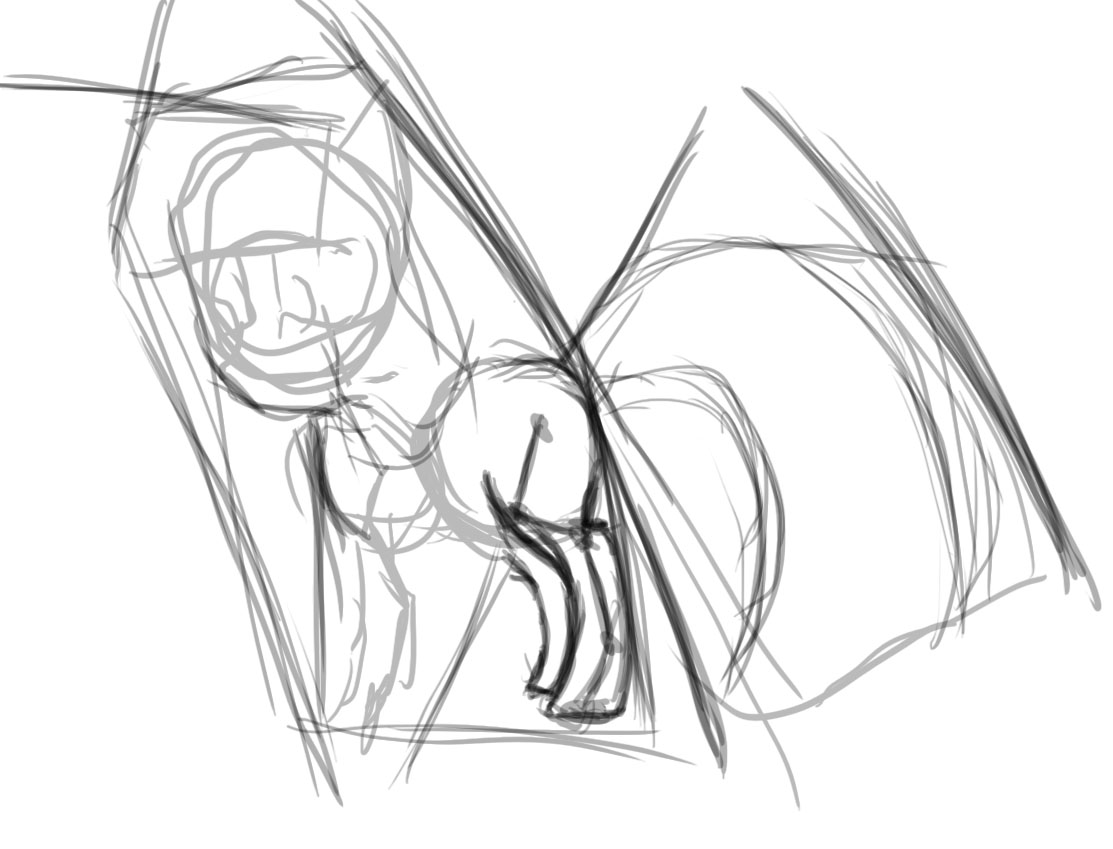
We used the leg undersketch, and what we know about angles to map in the next part. But what's with all those random lines? That is measuring. When drawing from a reference, in order to make sure you're getting the angle right hold a pencil up to the reference and measure angles between various outside points. Part of the undersketch can be mapping out these angles. This really helps you to nail placement and proportions.
 This doesn't seem so bad... wait, is this how we recorrect?
This doesn't seem so bad... wait, is this how we recorrect?A quick interlude here about the hoof joint. Look again at that album of screenshots. The hoof joint is not straight down (contrary to vertrev's guide). Hooves have a tilt to them that adds an extra bit of flourish to the pony leg curve and allows them to move anatomically. Keep this in mind, and so help me if I see you do that, I'll link you right back here I will.
Now let's move on to eyes. For a lot of people, eyes are very difficult. They are complex, but also take a lot of precision as we really look at them as viewers to get a good read on the pony's mood and emotions. Take a look at this:

Wait... what the heck is that, those aren't eyes? Well... No. But those are how you map out the eyes. The tops of the eyes should be even and so should the bottom. These lines follow along the overall tilt for the head. This is true for the irises as well, if you can see their bottoms. Usually the top of the iris is covered by the eyelid, even if just a sliver. This is true in humans too. Unless we're looking down, far to the side or are Pinkie Pie excited, the tippy top of your iris is covered up by the eyelid.
What else did I do there? I changed all sorts of things around. The hooves are longer, the hair less square. How did I know to do this? Simple, I drew more measuring guiding lines and found out I was wrong. Its okay to be wrong. Its expected. The mature thing to do is to admit your fault and do your best to fix it. Fixing is really quick once you have your guiding lines. You've already drawn the shape once before, so use it as a general guide and fix the placement and proportions to fit your guiding lines. Bigger, smaller, different angle or different curve. With a reference and guiding lines in tow it becomes all the more easier.
For completeness's sake, here is what the eyes look like slightly more finished:

By sticking to the guidelines and saying to myself hmm... the iris starts about a third of the way down this box and the curve here starts right after the corner I was able to correctly place the eyes as a whole.
 No one said art was easy, but with practice time, and some amount of advice, you'll get there.
No one said art was easy, but with practice time, and some amount of advice, you'll get there.Some notes on pony proportions and general anatomy tips:
- Their bodies are tiny. Two intersecting circles after all.
- They are very tall (taller than their body is long). And their necks are quite short in most circumstances.
- Their hair takes up a huuuuuge amount of space. Poofy hair. POOF! People usually make their OC's without poof and with humanized hair. This makes me a sad pony... don't make me a sad pony. Be aware. Spread the poof.
- A pony's jawline (the part below the mouth) changes. While in general a pony has a flat and horizontal jawline when their mouth's are open:
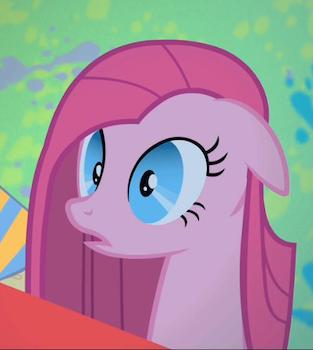
the jaw angles up and into the body: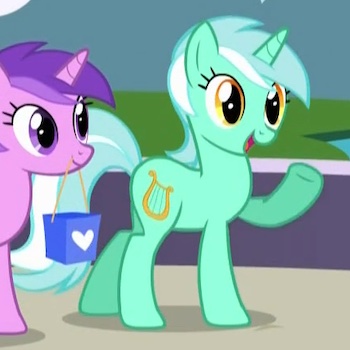
After all, the jaw hooks right below the ears in mammals. We just don't see the line go all the way in because the crease doesn't go that far. - Ponies have very small and rounded muzzles. There is no point at the end and to make a point draws attention away from the eyes in a way that is very... sad. They're also barely there, just a bump at the bottom of the eyes.
- Their ears are not a triangle like a cat's, but more like a football with a quarter of it missing where it attaches. The inside of a pony's ear is about half as long as the outside in most views.

 So very much to learn!
So very much to learn! - Pony eyes are quite distinct. They are elliptical, and at an angle, and when in 3/4 view they loose width, but not height. Check out the twismile emote. Her far eye is very thin, and her near eye not a circle, but an interesting series of curves... Hence why we map things out.
Now, we've covered the circles that make up a pony, their joints, the way their front hooves and legs bend, how to map out eyes and to never fear correction and also a lot of anatomy. That's a lot of pony and there's always more. So as always, feel free to ask questions, voice concerns, make jokes or quietly reply.
